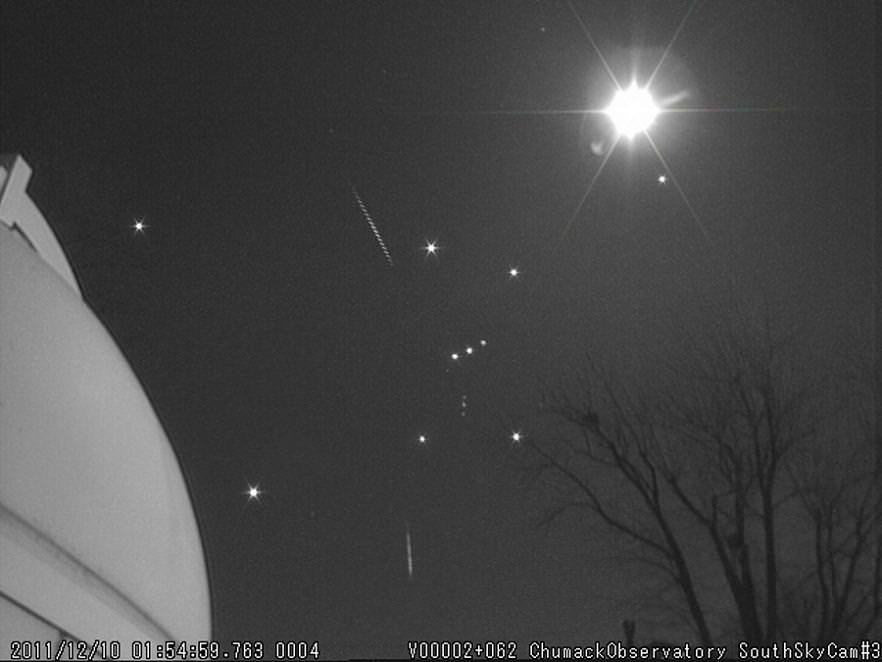[/caption]
Have you been watching the Geminid Meteor Shower? With just hours to go before the peak, activity has been high – despite this year’s Moon! If you’d like to know more on the history of this meteor shower, then check out this great article by Adrian West. If you plan on watching and would like to do something cool and unusual, then step inside…
As you can see from this below video sent to us by John Chumack, even the bright moonlight isn’t interfering too badly with this year’s awesome Geminid meteor shower display. While it will make the fainter ones more difficult to observe, the “fireball” attitude of this meteor shower just won’t quit!
As a reminder, be sure to be out tonight and through tomorrow morning for the peak of the show. You’ll want to try when the skies are the darkest, begin before moonrise – but don’t forget the display is usually the greatest around 2:00 a.m. local time when the sky window is pointed in the optimum direction. Just look along the ecliptic plane and follow the constellation of Gemini as it cruises roughly east to west across the sky as the night goes on! If you get clouded out? Try again the next night… and the next. The stream for the Geminids is very broad and lasts for some time.
Now… if you really want to have some fun and have an iPhone, here’s a real treat…
Thanks to NASA, there’s a new application which will help you to track, count and record information about this meteor shower and any meteor shower in the world – including sporadic ones! The “Meteor Counter” app will allow you to record your observations with an easy-to-use “piano key” interface. As you strike the keys, the app records information for each meteor, including the brightness and time. Once your observing session ends, your information and data is automatically uploaded to NASA researchers for analysis.
Created by Dr. Bill Cooke, head of NASA’s Meteoroid Environment Office at NASA’s Marshall Space Flight Center and the one-and-only Dr. Tony Phillips of SpaceWeather.com, this new iPhone application is going to change the way you observe and help science, too. “We developed the iPhone app to be fun, and informative, but also to encourage going outside to observe the sky,” said Cooke. “Our hope is the app will be useful for amateur and professional astronomers — we want to include their observations in NASA’s discoveries — and have them share in the excitement of building a knowledge base about meteor showers.”
The app is more than just a set of keys, though… It has an optional recorded audio track and users can even add their own comments as they observe. This will all be sent to NASA along with the numbers – vital information which will help researchers identify meteors associated with specific radiants and one-time events. The “Meteor Counter” was designed with everyone in mind – from the beginner to the expert – and even those who have never seen a meteor before. “The beauty is that it gradually transforms novices into experts,“ says Cooke. “As an observer gains experience , we weigh their data accordingly in our analyses.”
The Meteor Counter app is also much more. It provides a newsfeed and event calendar that’s kept up-to-the-moment by professional NASA and meteor scientists, and it will help keep you informed of upcoming meteor showers and the most current sightings. The app is currently available for iPhone, iPad and iPod Touch. Download the free app at : http://itunes.apple.com/us/app/meteor-counter/id466896415. A version for other mobile devices will be available in the near future. Complete instructions for using the Meteor Counter app is available at: http://meteorcounter.com/ and more information about NASA’s Meteoroid Environment Office can be found at: http://www.nasa.gov/offices/meo/home/index.html.
Wishing you clear skies!
Original Story Source: NASA Marshall Space Flight Center News Release. Geminid photography courtesy of John Chumack.

